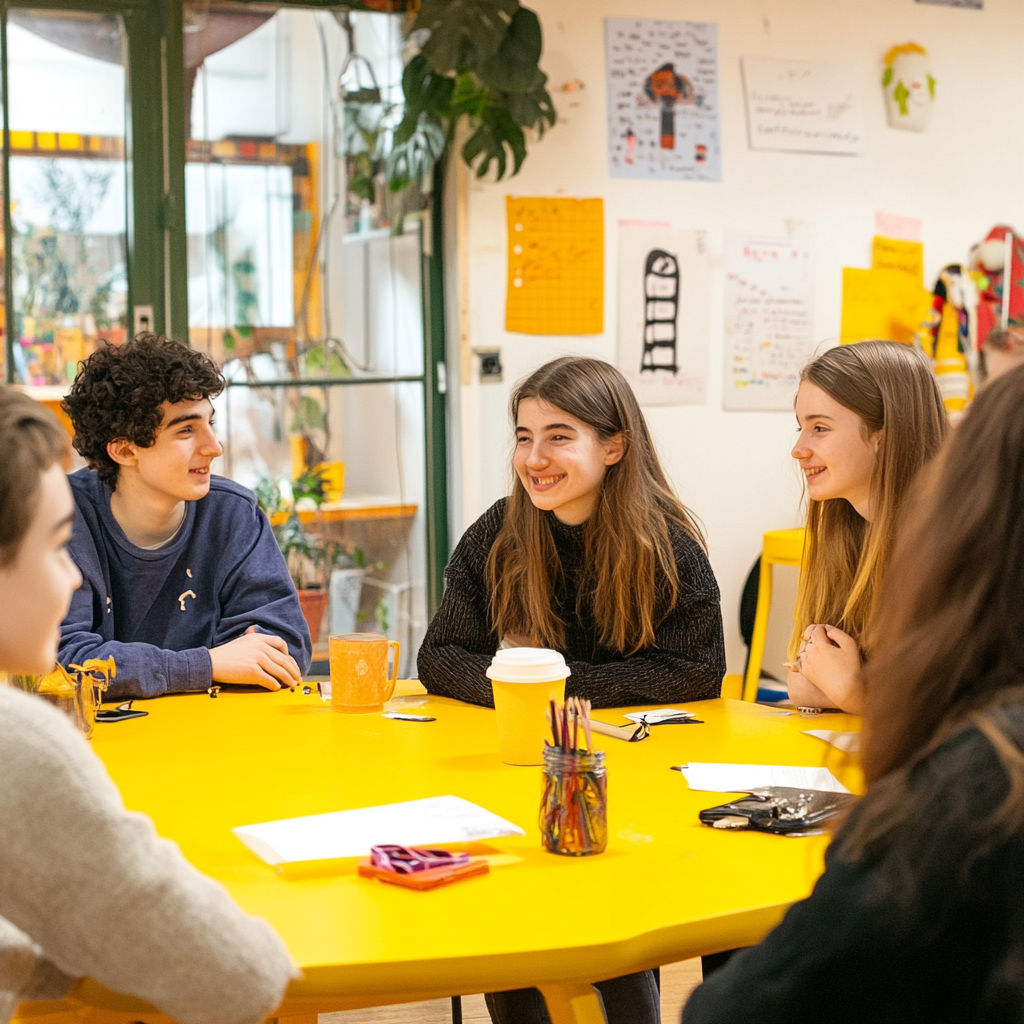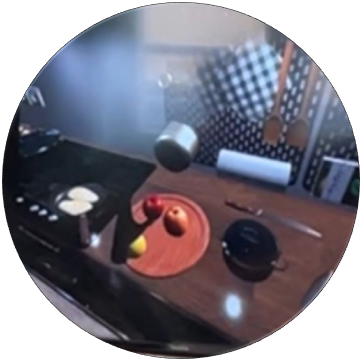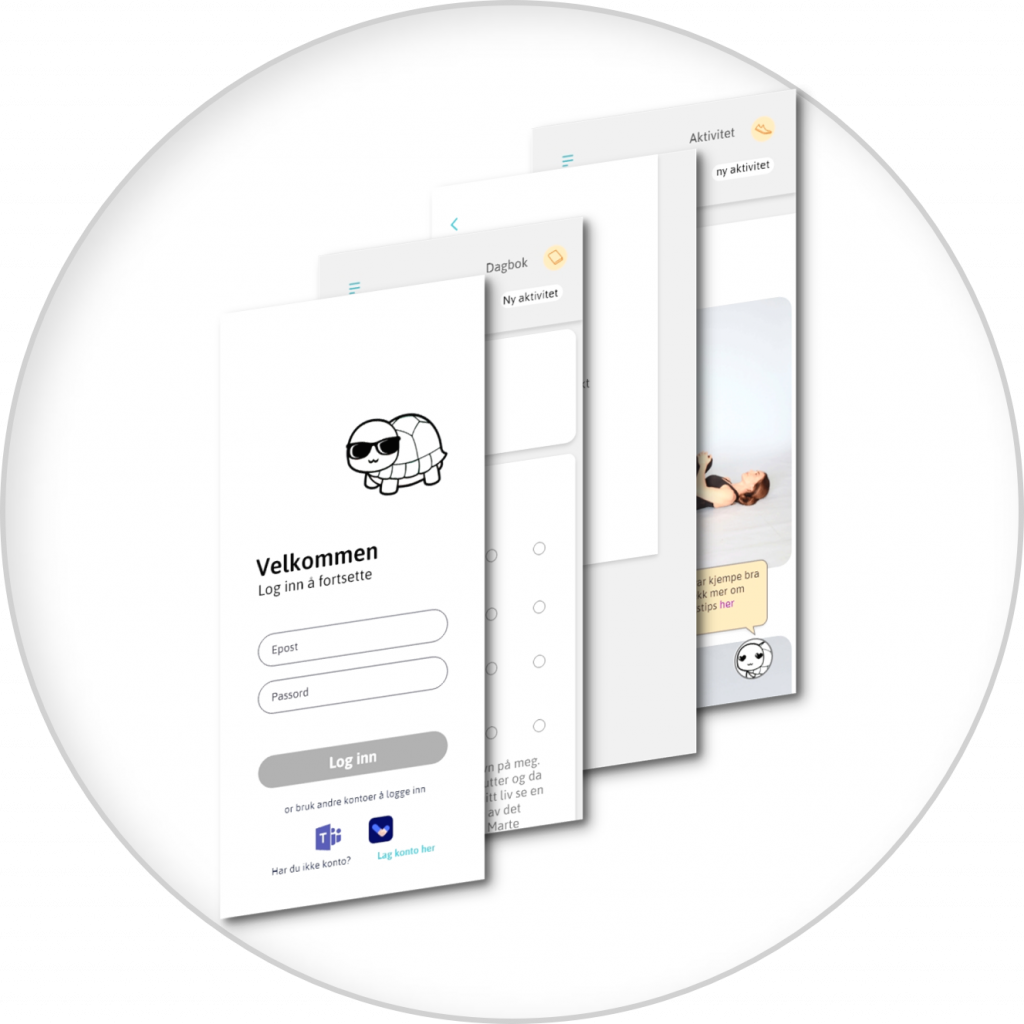Projects
CYP MOOD Home Therapy
Planning for Digital Home Therapy Service for a better quality of life for Children and Young People (CYP) with Multiple osteochondromas (MO) and Olliers disease (OD) and their Parents

Type: Prototyping Workshops & Focus Groups
Duration: 2025
The Need: Understanding the Pain
When a child is diagnosed with a serious, rare musculoskeletal disorder, it’s a reality that can be hard to fathom for the Child and Young people (CYP), the parents, and even the healthcare providers. The pain, disability, and the need for constant healthcare activities disrupt the child’s normal life, making simple activities like going to school or pursuing hobbies a struggle.
The question then arises: How can we manage the pain, motivate children or young people and their families to stick to daily activities, and support them through the uncertainty and anxiety caused by the condition?
Aims of the Project
The CYPHomeTherapy project to address these needs by focusing on two patient groups: children and young people with Multiple osteochondromas (MO) and Olliers disease. The aim of MOOD_CYP project is to understand what are the needs of parents, children / young people with MO and OD? How can we improve today’s MO & OD patient journey with state-of-the-art technology to improve adherence to the therapy of MO and OD children.
It will also create new, initial, knowledge on what kind of features and design components are needed for the service including both personalized digital mobile solution and device that aims to collect pain information from children and young people with MO and OD.
Impact: Value Creation Potential and Benefits
The long-term goal of the project is to result in digital innovations, improved quality of life and more efficient and motivating treatment that assures adherence to the patient-specific treatment goals. This could help these children to complete school, enter and stay in working life with reduced pain and thus pain-related sick leaves and pain-related complications.
The CYP MOOD HomeTherapy project is a step towards a future where children with rare musculoskeletal disorders can receive effective, personalized treatment that allows them to lead fulfilling lives. By focusing on the needs and opportunities for co-creation of digital home therapy solutions, this project aims to address the physical and psychological challenges these children face, offering hope for a brighter future.
Interested? Take contact with nenad.pavel@oslomet.no or minna.pikkarainen@oslomet.no
VR HAB
VR solution for stroke home rehabilitation

Type: Health Pilot Project Financed by Norwegian Research Council
Partners: Forinx, Aker University Hospital
Duration: 2021-24
AI and VR in Stroke Rehabilitation: A Novel Approach
In 2017, stroke accounted for 438,000 deaths across Europe, representing 8% of total deaths. Despite the increasing numbers of stroke cases, the potential use of Artificial Intelligence (AI), mobile technologies, and gamification in stroke risk evaluation and rehabilitation remains largely underexplored. This blog post delves into how AI-powered Virtual Reality (VR) solutions can revolutionize stroke rehabilitation, particularly in home environments.
The Promise of AI and VR in Stroke Rehabilitation
AI-powered VR solutions can support personalization and self-management in stroke rehabilitation scenarios that require long-term supervision, care, and special training. These solutions are particularly useful in cases that require efficient communication and decision-making between patients and expert teams, such as physiotherapists, psychologists, doctors, nurses, and others involved in stroke care.
Newer digital technologies like sensors, medical devices, data transferring technologies, mobile communication technologies, AI/machine learning, and VR technologies, coupled with gamification, open new opportunities for self-care, patient empowerment, real-time data utilization, and remote connections along the care journey.
Stroke Home Rehabilitation & Self Management
Recent research reveals that self-management interventions, specifically those that support the physical rehabilitation of stroke patients, significantly improve health outcomes for stroke survivors compared to standard care. However, there is currently a lack of research about interventions targeting stroke patient self-management. This underscores the need for personalized, self-management, and gamification-based digital stroke home rehabilitation solutions that can help patients return to their normal life rapidly.
Stroke Home Rehabilitation and VR Technologies
Emerging technologies like VR are promising due to their applicability in healthcare to improve current clinical practices. VR’s effects on stroke rehabilitation have been identified in multiple dimensions of functional recovery, including balance, gait, mobility, upper extremity function, cognitive ability, activities of daily life function, and participation.
However, most VR utility is currently through in-person supervision and instruction of therapists at hospitals or clinics. There is a need for more research on combining physical and mental therapy perspectives and whether VR changes are sustained in the long term.
AI Technologies in Stroke Home Rehabilitation
AI is a technology that may be used to provide VR system automatic adaptation, with minimal clinician input. AI increases the speed of adaptation of therapeutic games and has been used in stroke rehabilitation to increase patients’ interest and motivation during rehabilitation training. However, it is unclear how AI and particularly, deep learning models could be used as an integrated strategy to support real-world stroke rehabilitation exercises.
Research Questions and Objectives
The AI&VR-Stroke-Rehab project aims to use participatory design to co-create a novel AI-powered, VR-based home treatment solution for stroke patients’ group therapy, combining physical and mental therapy perspectives. The solution will be co-developed by the research team and the company Fornix from Norway.
The project’s research questions include:
- What are the specific needs of stroke patients and expert teams that could be addressed with AI-based avatars and VR empowered design?
- What are the specific design features and scenarios in the VR solution that is possible to build using AI, specifically AI-powered avatars, to support the stroke patient physiotherapy and improvemental health outcomes?
- What is the feasibility of the AI-powered AR solution and the identified features for stroke patients home rehabilitation?
The project’s approach and methodology include participatory co-design workshops and rapid prototyping. The project also considers innovation and sustainability aspects, and it aligns with the WHO’s new framework for long-term care provision. The AI&VR-Stroke-Rehab project represents a novel and promising approach to stroke rehabilitation. It leverages the power of AI and VR to create personalized, self-management, and gamification-based digital stroke home rehabilitation solutions. While further research is needed, the project provides a critical step forward in addressing the substantial burden of stroke and improving patient outcomes.
Empowering Scoliosis Patients on Their Path to Recovery
Digital Home Support, Motivation & Pain Management for Patients and their Parents with scoliosis problems – a Comprehensive Digital Approach

Type: Health Pilot Project Financed by Norwegian Research Council
Partners: Youwell, Backpain Association
Duration: 2022
A Leap Forward in Scoliosis Treatment: A Digital Solution
Scoliosis, a condition where the spine rotates around its axis while simultaneously curving sideways, often in an S- or C-shape, is a prevalent issue. The most common form, Adolescent Idiopathic Scoliosis (AIS), typically develops between the ages of 10-15 and is more prevalent in girls. The primary treatments include braces for those still in their growth phase, and surgery for severe cases. For those who have completed their growth phase or adults with a less pronounced curve, treatment options are limited.
Patients with severe scoliosis may face challenges such as impaired lung function and mental health issues. Hence, regular exercise is often recommended. However, we at the Back Association have identified that there is a significant need for information and better follow-up, especially concerning scoliosis-specific training.
The Need for a Digital Solution
In an effort to fill this gap, we are eager to contribute to the development of a digital solution that can support scoliosis patients and their parents outside of the healthcare system. We have found that scoliosis patients and their families need better ways to:
- Communicate with experts and among themselves,
- Support and stay motivated to perform daily physiotherapy activities,
- Cope with the anxiety and uncertainty caused by the disorder and associated pain.
Despite the clear need, there are currently no digital solutions available in Norway or globally that cater to these specific needs.
Our Proposal: A Comprehensive App
Our proposed solution is a comprehensive app that offers support, information, and motivation to scoliosis patients and their families. We are seeking funding to develop a robust prototype of this digital solution, which can be tested and implemented with minor changes.
Our app will aim to improve the treatment for scoliosis patients, facilitate better communication between healthcare personnel and patients, and offer much-needed support for patients’ relatives.
Overcoming Challenges
We understand the challenges that come with scoliosis— the difficulty in motivating children to exercise, the stigma and discomfort around brace use, and the anxiety in the waiting period before surgery. Our digital solution will provide clear and accessible information and guidelines on the patients’ terms.
Key Features of the App
Our digital solution will:
- Increase health competence with short video clips, articles, and quizzes.
- Encourage training with reliable exercise routines, video demonstrations, and progression tracking.
- Provide an overview of progression about well-being and activities through a digital diary.
- Offer resources in the health system and the Back Association such as contact with support groups with other patients and contact with their own doctor and psychologist.
- Create social features where participants can exchange their experiences
In conclusion, the project is committed to improving the lives of scoliosis patients and their families. We believe that a digital solution can significantly enhance their treatment and coping strategies, and we are eager to make this vision a reality.